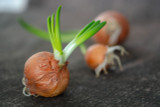6 Easy-To-Grow Vegetables For Beginner Gardeners
Are you wondering which vegetables are the easiest to produce from seed if you're new to gardening? Growing from seed is more affordable and offers a far greater selection of options. In this list of vegetables for beginner gardeners, we've included a variety of vegetable seeds that can be sown directly into your garden soil. However, some can also be started indoors and are suitable for transplanting. Read on to learn more!
Lettuce
Virtually all gardens are capable of growing lettuce.
Lettuce may be started inside for transplanting or immediately seeded in your garden plot. It's one of the few crops that may be cultivated year-round in many climates. However, it should be sheltered and harvested at smaller sizes during the hotter months. As lettuce grows more slowly in the shadow and bolts less quickly, it can be harvested for longer.
Radishes
Radishes may be interplanted with slower-growing crops and can be harvested as soon as 24 days after planting. Radishes may be planted as soon as the soil can be worked in the spring.
Each seed should be sown at least 2 inches apart, or you can thin them to this distance once they sprout. Add a layer of soil or compost approximately half an inch thick over the seeds.
A word of advice: carrot seeds pair well with radish seeds. When planting, combine carrot and radish seeds, especially if your soil is prone to forming a hard crust. The quick-growing radishes will break up the soil for the slower-growing carrots by pushing up through it. Carrots will fill the row as you harvest the radishes.
Swiss Chard
Swiss chard, sometimes simply known as "chard," belongs to the beet family. It grows well in both cool and warm conditions. It is also a nutrient-dense superfood that is rich in minerals, phytonutrients, fiber, and vitamins A, C, and K. Furthermore, its rainbow hues are undeniably stunning!
Carrots
We're adding carrots here mainly because, as long as they're planted in loose, sandy soil throughout the colder parts of the growing season—spring and fall—they're really simple to cultivate (carrots can tolerate frost). Carrots come in a variety of colors than orange, such as purple and white. Some varieties are even pest and disease resistant.
Green Beans
Since beans fix nitrogen as they go, they can thrive even in relatively poor soil! Pole varieties offer a longer harvest period than bush kinds, which don't need trellising.
Snap beans are the most favorable in cool climates. Lima beans, southern peas, and asparagus beans are all fairly easy to cultivate in hot climates. All bean plants grow quickly and tend to perform best in warm, moist soil.
Kale
Whether you like it or not, kale is extremely hardy and can thrive in a variety of climates. There are several phases at which it may be picked, and the buds and flowers are both edible! Closely related to kale, mustards and collards are similarly easy to cultivate.
Kale will grow until it becomes too hot when plants are placed outside from early spring to early summer. You should plant again in the fall, especially if you reside in the south of the United States. Kale has the additional benefit of getting sweeter after experiencing a few frosts. Try steaming, stir-frying, or baking kale. Enjoy them in salads, smoothies, omelets, casseroles, and more.
As a beginner, getting the right tools and quality vegetable seeds that provide a high yield can also make all the difference. Try planting some of these versatile veggies someday!
Recent Posts
-
The Secrets To Growing Radishes In Containers
Container gardening is a popular way to grow vegetables like radishes. Growing radishes in container …26th Jun 2023 -
How To Successfully Grow Onions From Seeds
Many recipes use onions to give a strong taste and smell. Growing onions from seeds is better than b …26th Jun 2023 -
How To Grow Radishes At Home: A Step-By-Step Guide
Growing your radishes at home can be a rewarding and delicious endeavor. These crispy and spicy vegg …26th Jun 2023





